
With the influx of emigrants to the Australian colonies in the mid-nineteenth century, numerous draper's stores sprung up that catered to an expanding urban society. An ivory satin evening dress circa 1895 in the collection of the Brighton Historical Society has the label "Bussell, Robson & Bussell, Melbourne" stamped on the interior waist band of its bodice. While a number of now defunct stores, such as Buckley and Nunn of Melbourne and Farmer and Company of Sydney, remain within living memory, many others, such as Bussell, Robson and Bussell, have slipped from the pages of our retail history. Surviving items bearing these long lost names reveal a vibrant local design, manufacturing and retail market.
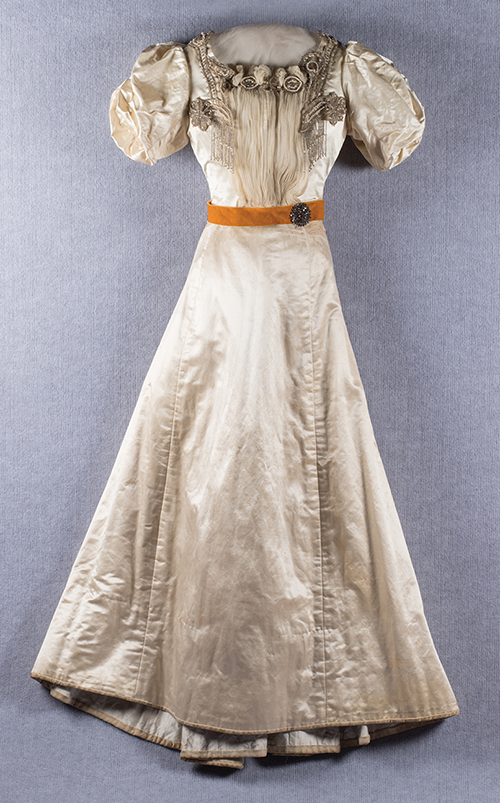 |
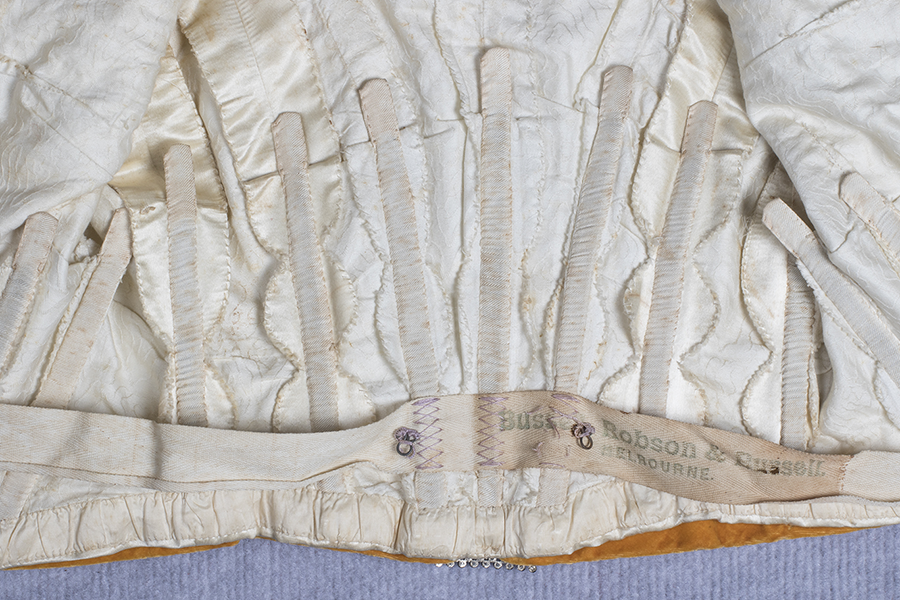 |
|
Bussell, Robson & Bussell, Melbourne |
Starting out as Robson and Bussell in 1877 at 63A Bourke Street the business, which relocated to 246-252 Bourke Street, announced in February 1885 that Edward Bussell had joined them as their representative and partner in London and they would henceforth be known as Bussell, Robson and Bussell. With a new partner located in London, the business stated they were able to extend their operations both in Melbourne and Europe and they had "much pleasure in drawing attention to this change in our firm, which places us in a position unequalled, as we are now enabled to import direct from the best manufacturers".
The evening dress in Brighton's collection would have been made-to-order by a skilled dressmaker employed by Bussell, Robson and Bussell. In 1877 a Mrs Barber, dressmaker, placed an announcement in the Argus that she had commenced business in connection with Robson and Bussell. Many chief dressmakers attached to such establishments were known in their own right. It is not known though whether Mrs Barber worked exclusively for Robson and Bussell, but her advertisement shows she was closely aligned with them and had previously been with another well-known Melbourne draper, Robertson and Moffat.
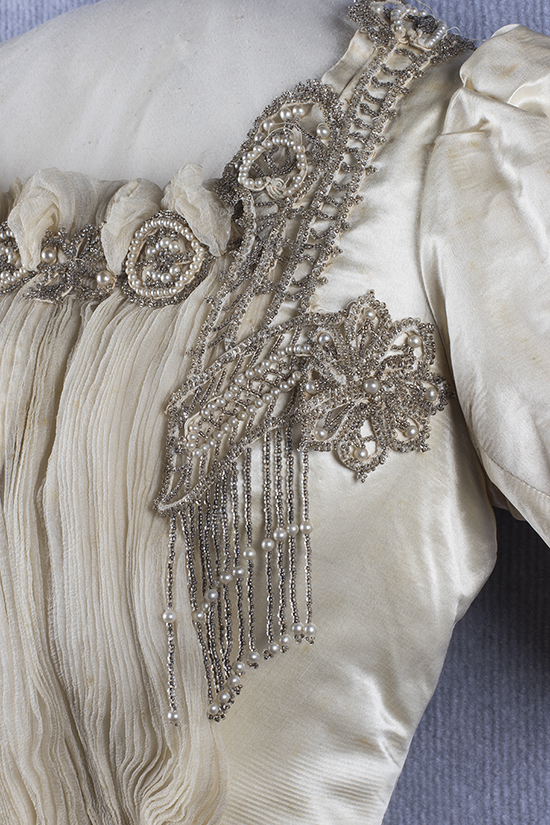 |
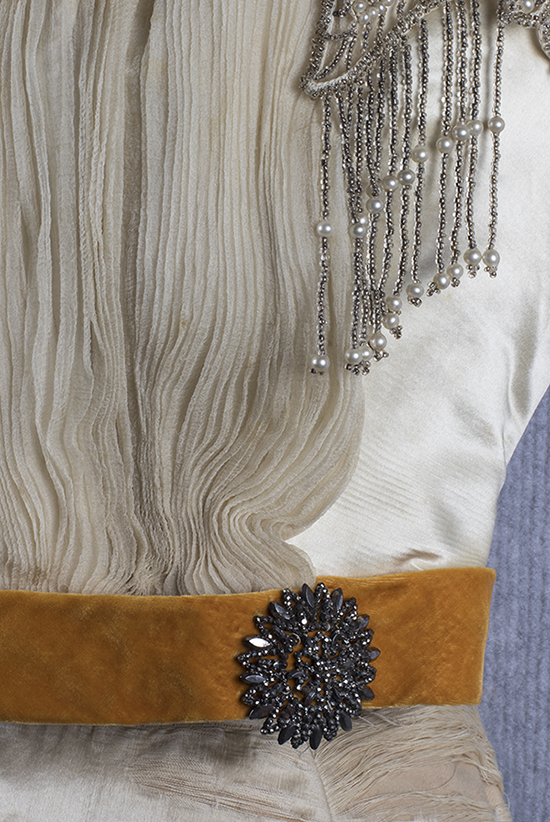 |
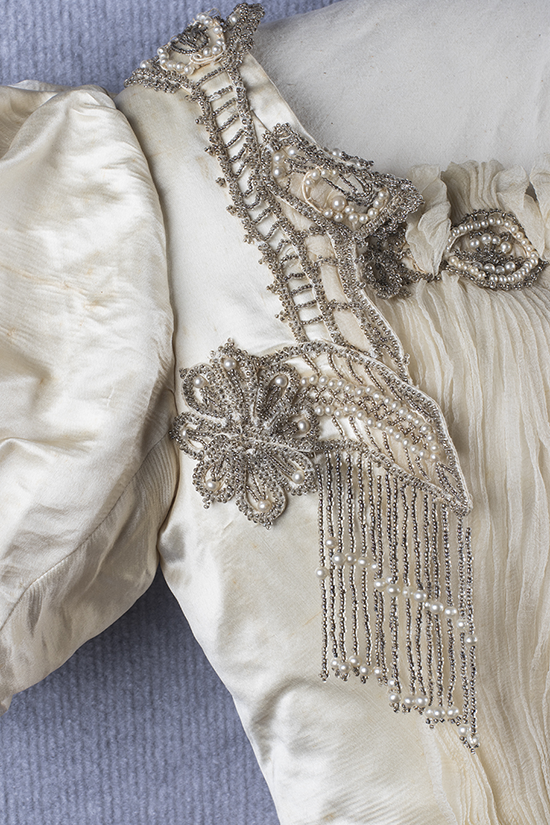 |
The bodice of Brighton's dress is decorated with a central panel of finely pleated chiffon and embellished with ready-made strips of beading and artificial pearls. The garment is set off with a russet coloured velvet band applied around the waist of bodice and finished with a metal rosette. The store's label is placed on the inside waist tape of the boned bodice. The practice of placing makers' or retailers' labels into garments only began in second half of the nineteenth century and was not commonplace until the mid-twentieth century.
Few items bearing the store's label survive, but a pair of late-nineteenth century red leather shoes trimmed with red grosgrain bows labeled "Bussell, Robson & Bussell, Melbourne, London & Paris" are in the collection of the National Trust of Victoria. Shoes and gloves were part of the stock of imported manufactured goods made exclusively for Australian drapers and universal providers.
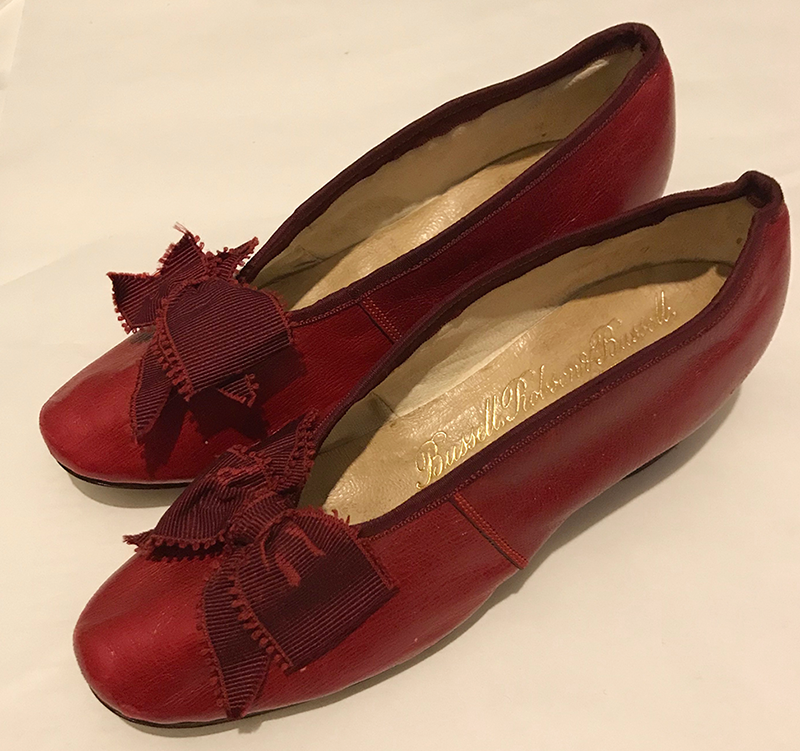 |
Bussell, Robson & Bussell |
With agents and buyers located in Britain, who sent regular supplies of the latest goods direct to Australia, stores retailing in fashion were keen to advertise their links to international fashion centres. In 1871 the Geelong business of Bright and Hitchcocks, which operated from 1853 to 1968 printed trade cards extolling the store's ability to ensure "the constant supply of the latest novelties in every department".
|
Bright and Hitchcocks, Geelong |
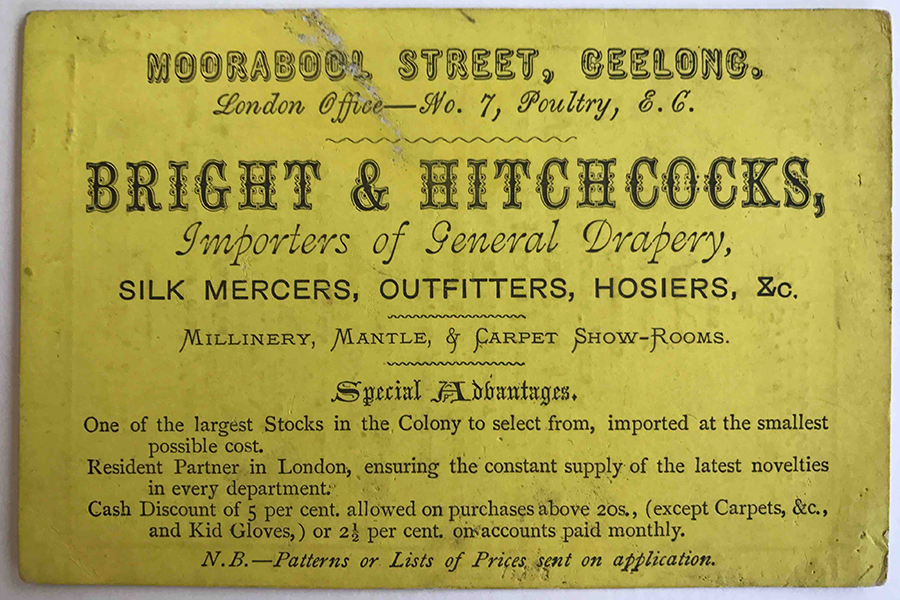 |
The survival of this rare Bussell, Robson and Bussell dress with its intact label shines a light on a long lost retail label. It is among a number of items in the collection of the Brighton Historical Society which bear the labels of businesses and fashion houses long gone, including an evening dress from the 1890s made by George and George of Melbourne (later George's), a 1938 wedding dress by Melbourne dressmaker Beatrice Cook, a 1950s skirt by Milton Harding and outfits from the 1950s to the 1970s by Hartnell of Melbourne, Stell-Ricks and Ricki Reed.
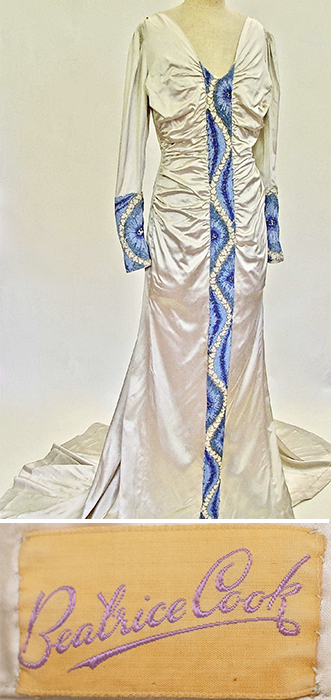 |
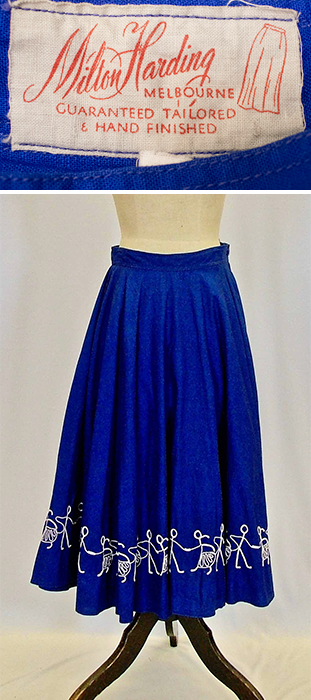 |
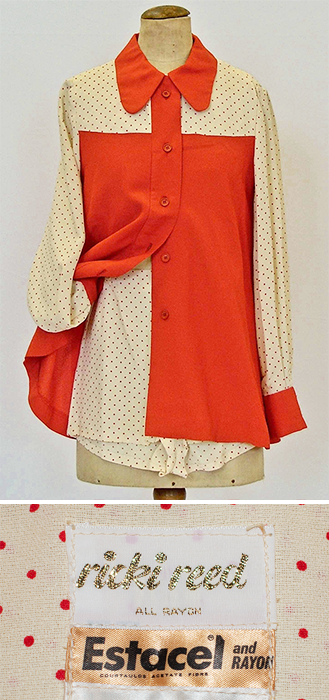 |
|
Left: Beatrice Cook, wedding dress, 1938 |
||
Laura Jocic, 2019
Page design by Jessica Curtain
References
The Argus, 22 October 1877, p.1
The Argus, 28 February 1885, p.1
Bright & Hitchcocks Pty. Ltd., University of Melbourne Archives. 1961.0004
Jocic, Laura, Australian Made: One Hundred Years of Fashion, National Gallery of Victoria, Melbourne, 2010
Sands & McDougall's Directories, Melbourne. State Library of Victoria.
Acknowledgements
Thanks to Elizabeth Anya-Petrivna, Curator, National Trust of Australia (Victoria), for our wonderful visits to the costume collection to view early Australian labelled garments.
This research was funded by a Local History Grant from Public Record Office Victoria.
Brighton Historical Society Costume Collection Project, 2018-2019.
